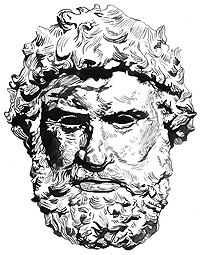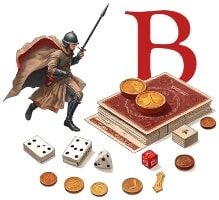Reading from the back matter of The Coming of Conan the Barbarian, Del Ray, 2003, pages 429-52
This is an excellent companion for Howard’s earlier Conan stories. Patrice sources Howard’s literary and person inspiration for much of his early work; which include Jack London, H. P. Lovecraft, Herodotus, Livy, Bulfinch, his obsession with ‘remembrance/reincarnation’ stories, and his own Texas heritage. Howard believed in genetic dreams. I highly recommend Hyborian genesis for the Howard reader, and would like to go on to discuss the only point of disagreement I have with the author.
First off, literary reviewers are notoriously poorly grounded in the reading of any nonfiction written after 1800, which is to say almost all of it. This is a necessary fact, as being well read in fiction represents a massive reading commitment. Think about it, if you read 5 of 10 books on the Battle of Tours, you still know the story. But if you read only 5 of the top 10 horror authors of the 1930s, well, you have a blind spot that you could drive a literary truck through. So, literary reviewers will tend to have their blind spots in the nonfiction realm. The orthodoxy is that fiction sources fiction, not nonfiction.
Patrice shows her blind spot when she punts on the genesis of an unpublished Conan story set in the Black Kingdoms, The Vale of Lost Women, reviewed on this site. It is a story of brutal ethnic cleansing. Ms. Louinet writes, “As to the racial overtones of the story, while the violent ethnocentrism is understandable when we recognize its origin in the nineteenth-century Anglo-Saxon settler viewpoint, with the blacks standing in for Indians, it makes for unsettling reading for a modern audience.”
I believe Patrice correctly notes that Howard was, at this period, heavily influenced by Texas folk history. I do not however think the blacks were standing in for Indians. Howard used the Picts as Indian stand-ins when he did settler stories. This was a white interloper story in line with Queen of the Black Coast and the untitled draft from this period that was later published as a pastiche titled The Snout in The Dark in the Ace paperback collection. What I think Howard was doing here was utilizing recent nonfiction literature on the Sudan [brown versus black with white interlopers] and the recent U.S. Marine Corp operations in Haiti, with white marines serving as interlopers [some of whom Howard might have known], and often mercenaries, in the black civil war.
Such dirty colonial and post colonial civil strife as Howard probably read about in newspaper editorials and books by current authors like Lothrop Stoddard are not on the literary radar screen, so their oversight as source material by a literary reviewer is quite understandable. I just wanted to point this out, as one who writes in similar dark corners as Howard, that such author’s tend to use as much history and non-fiction literature for inspiration as they do literature. Such is the source for that un-definable sense of ‘the real’ for which Howard is noted, even as found in the pages of a tale of sorcery in some make believe world.











